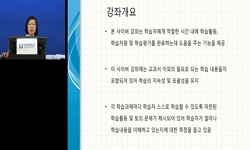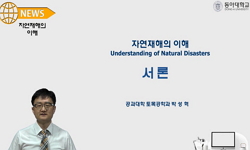The purpose of this study is to review the previous scholarship and offer perspectives for future researches on the environmental history of the Ming-Qing in Korean academia. Notably, it attempts to fill the void as there have been barely any critical...
http://chineseinput.net/에서 pinyin(병음)방식으로 중국어를 변환할 수 있습니다.
변환된 중국어를 복사하여 사용하시면 됩니다.
- 中文 을 입력하시려면 zhongwen을 입력하시고 space를누르시면됩니다.
- 北京 을 입력하시려면 beijing을 입력하시고 space를 누르시면 됩니다.

명청시대(明淸時代) 환경사 연구의 성과와 전망 ― ‘환경 속 인간’에서 ‘인간 속 환경’으로 ― = Retrospect and Prospect of Environmental History Studies in Ming-Qing China ― From Humanity within Environment to Environment within Humanity ―
한글로보기https://www.riss.kr/link?id=A106876088
- 저자
- 발행기관
- 학술지명
- 권호사항
-
발행연도
2020
-
작성언어
-
-
주제어
환경사 ; 회고와 전망 ; 소빙기 ; 기후 변동 ; 재해 ; 황정 ; 산림 남벌 ; 环境史 ; 回顾与展望 ; 小氷期 ; 气候变动 ; 灾害 ; 荒政 ; 山林滥伐 ; Environmental History ; Retrospect and Prospect ; Little Ice Age ; Climate Change ; Disaster ; Disaster Relief ; Deforestation
-
등재정보
KCI등재
-
자료형태
학술저널
-
수록면
141-178(38쪽)
- DOI식별코드
- 제공처
-
0
상세조회 -
0
다운로드
부가정보
다국어 초록 (Multilingual Abstract)
The purpose of this study is to review the previous scholarship and offer perspectives for future researches on the environmental history of the Ming-Qing in Korean academia. Notably, it attempts to fill the void as there have been barely any critical reviews of pre-existing studies on this topic. The main objects of analysis were the articles registered on the Korea Citation Index (KCI) that covered “humanity within environment” and “environment within humanity.” These articles were classified into the following three sub-categories, namely classifying how humanity were “victims,” “developers,” or “overcomers” in their relationship with the environment.
The best way to adapt to the surrounding environment that had already been disrupted beyond restoration, ironically, was continuing the development and thus holding the status-quo. Human-made development affected all aspects of the adjacent environment, including but not limited to vegetation, animals, and soil. In turn, the environment caused significant changes to the local community, such as the changes seen in the residential pattern, economy, and customs. Following the rapid population growth in the Qing and the ensuing imbalance between the population and resources, an ongoing process of conflict between the newly migrated people and the original local people, the cultivation of barren land, the exploitation of woods leading to the destruction of forests, the erosion of soil continued. Only after the environmental changes resulted in natural disasters did humanity realize the severity of the ecological damage. Through this process of trial and error, the state - among others various level or human-made organizations and institutions - understood the need for introducing a more systematic and organized reaction to the relations between humanity and the environment. Once we expand our scholarly inquisition to include long term environmental changes, we will have a better understanding of the humanity that sees people in a more various and enriched perspective.
동일학술지(권/호) 다른 논문
-
- 명청사학회
- 車惠媛 ( Cha Hye-won )
- 2020
- KCI등재
-
명청교체기(明淸交替期) 동강진(東江鎭)의 위상과 경제적 기반
- 명청사학회
- 徐源翊 ( Seo Won-ik )
- 2020
- KCI등재
-
순치(順治) 연간의 한인(漢人) 이신(貳臣)과 ‘만한일가(滿漢一家)’의 실상
- 명청사학회
- 朴一賢 ( Park Il-hyeon )
- 2020
- KCI등재
-
청(淸) 건륭제(乾隆帝)의 황위(皇位) 계승자 결정과 훈정(訓政)
- 명청사학회
- 宋美玲 ( Song Mi-ryung )
- 2020
- KCI등재





 KCI
KCI KISS
KISS






